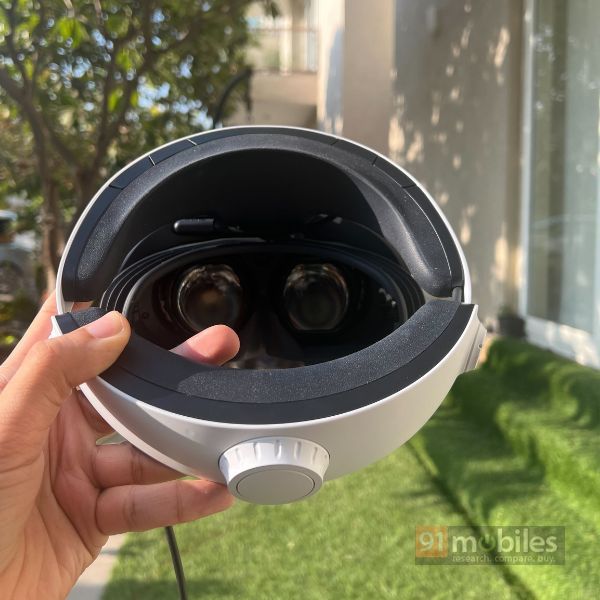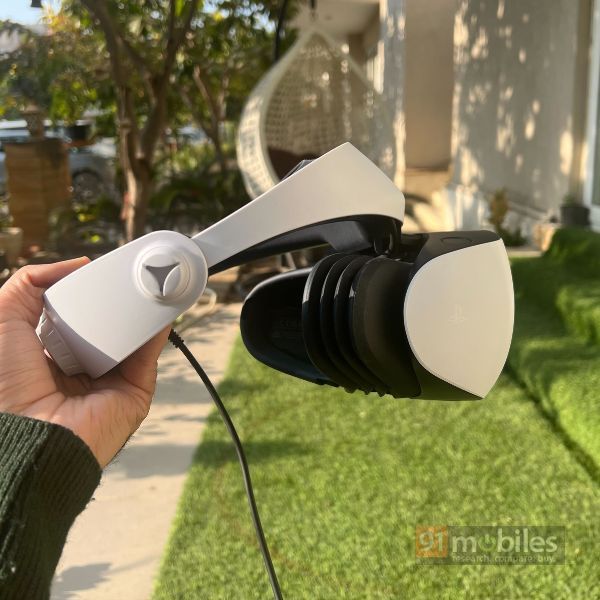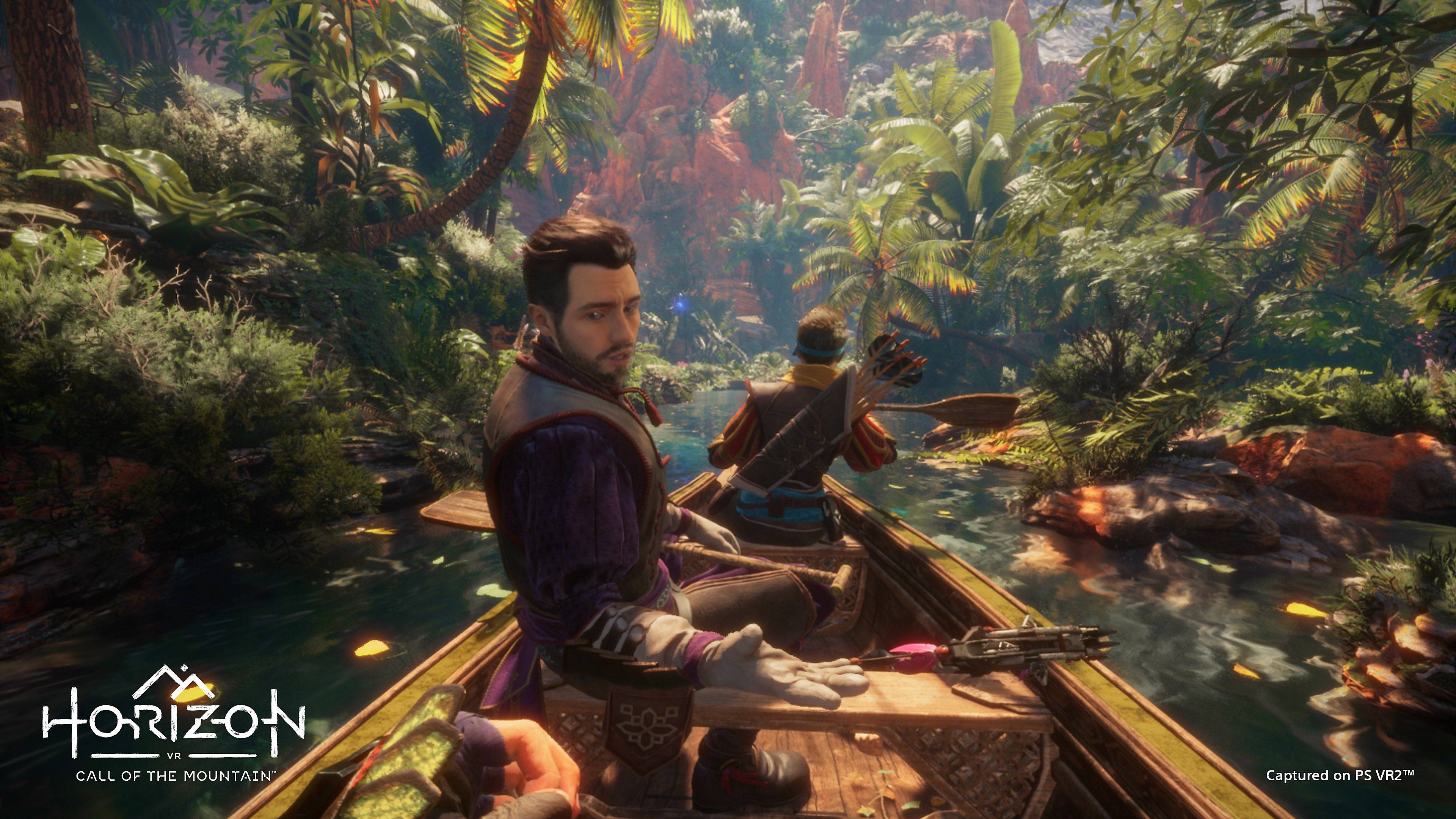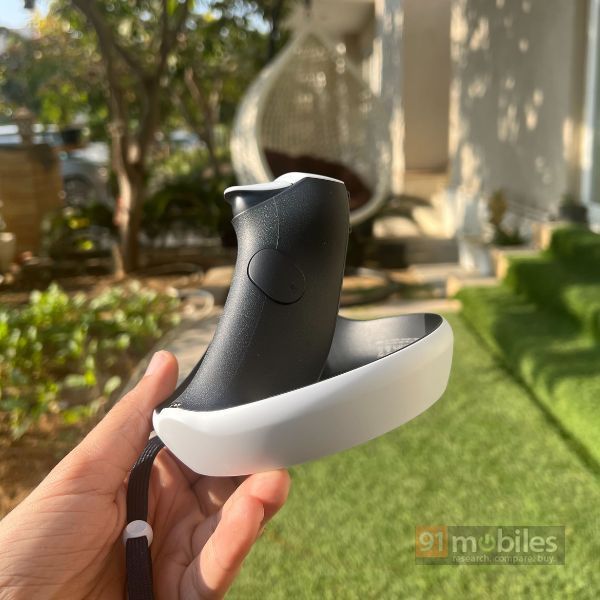VR/AR has been touted to be the future of gaming for a while. And if Sci-Fi movies are any indication of how the future should/would be (as they often are), immersive gaming headsets should have been mainstream by now. The complications associated with VR/AR gaming stretch far beyond the available games as most casual gamers find it too difficult to even set up a VR headset. Multiple wires, cameras, and the requirement for a spacious room before being able to play a game, make it a rather cumbersome experience. If Sony is to be believed, PlayStation VR2 is here to change this. While the original PlayStation VR was impressive for its time, it had all the issues I mentioned above. Without giving too much away from my detailed review, the new iteration of the virtual reality headset from Sony doesn’t just get rid of these issues but makes such an impressive leap in hardware that makes playing VR games more fun than ever.
Before I go ahead with my thoughts on the PlayStation VR2, I would like to share the disclaimer that the review unit was provided to me by Sony and the unit came bundled with Horizon Call of the Mountain. Without further ado, let’s jump into the review.
Hardware – simple and effective
Simple designs are often the hardest ones to pull off. That’s why the crowning achievement of the PS VR2 is its headset’s design and functionality. Despite offering top-notch hardware, Sony has somehow ensured that the design is simple and unobtrusive.

Let’s now get into the nitty-gritty. The headset features two OLED displays with 2,000 x 2,040 pixels resolution for each eye. As these displays are your gateway to the virtual world, the quality on offer had to be immaculate and let’s just say the PS VR2 exceeds the expectations in this department. The vibrant visuals are a sight to withhold, and with the high-resolution nature of the displays, the individual pixels will be imperceptible to your eyes.

This, along with the fact that the headset’s displays come with a maximum refresh rate of up to 120Hz and offer a field-of-view of approximately 110 degrees, means that you get an immersive and fluid viewing experience that truly pulls you in.
The lens separation is adjustable and there is a six-axis motion sensing system in the headset that has a three-axis gyroscope and a three-axis accelerometer in place. You get four cameras embedded in the headset that help in headset and controller tracking and there is an IR camera for each eye’s tracking as well. The VR headset features a built-in microphone and there is a stereo headphone jack in place as well. To connect with the PlayStation 5, the headset comes with a USB Type-C port.
Controllers
The controller design has been revamped by Sony this time around, and it changes the gaming experience entirely. While the stick design on the original PS VR was somewhat okay, it always felt like an afterthought and didn’t feel intuitive at all. Sony clearly went back to the drawing board and figured out that the VR2 controller design needed to be as close to the DualSense controller design as possible. And the results are pretty good.

With the presence of triggers and joysticks, you’ll feel right at home and will get used to the controls fairly easily. The placement of the L1 and R1 buttons, however, could have been better in my opinion. While playing the game, I found myself to be unintentionally pressing these buttons often. The controllers also come with straps that ensure that you don’t end up dropping them accidentally.
![]() Setup process
Setup process
Setting up PlayStation VR2 almost feels like a piece of cake in comparison to the installation process of some other VR headsets. The headset connects to your PlayStation console with just one USB Type-C cable. You have to connect the individual controllers with the console one by one following the on-screen process, and then switch on the headset with the button located at the lower part at the front around the centre. You can either connect the bundled earphones with the audio jack on the headset or choose your own (I went with Sony WH-1000XM5). Personally, I didn’t have any comfort issues even with the headphones on. You can adjust the grip of the headset with the button located at the back and as the headset is quite light, you won’t feel bogged down by the weight even after playing for an hour.

With the grayscale view of the surroundings you get thanks to the built-in camera, you can easily adjust the play area, pick up the controllers, or do something else while wearing the headset. This is quite a neat addition as it means you don’t need anyone’s help to move around while setting up the PS VR2. I found the headset to be quite accurate while judging the play area. It managed to identify the obstacles quite efficiently. After adjusting the eye tracking, you’re pretty much good to go. You can choose to play while standing or even sitting.
Gameplay experience
Pushing the hardware talk aside, the reason you will be buying the PS VR2 is to enjoy gaming, so let’s talk about that. As I mentioned above, I got a copy of Horizon Call of the Mountain with the headset. Currently, there are very few games that support PS VR2 as the majority of the original PS VR titles do not support the new hardware, so most of my experience was based on the Call of the Mountain. As this title excellently showcases the capabilities of the new hardware, I did not find this to be a problem, but if you’re buying, you will have to be patient to get more games for the VR2.
Coming to my gameplay experience, the first thing I noticed while playing the Call of the Mountain was how vibrant the environment looked and how immersive it felt. It might sound like a cliché but when you load up the game, it truly feels like you’re there in the boat, riding along in the creek, and as soon as the boat is overturned and you have to swim and climb your way through to safety, you know you’re in for a treat.

Within the game, interacting with objects, picking up fruits to eat, throwing stuff, shooting arrows etc. felt authentic to the point that when I encountered my first enemy, I got startled. After shooting a few arrows and neutralising the enemy, I felt like I needed to catch my breath as it was all so immersive.
As the eye-tracking is accurate, even in menus, if you have the gaze-tracking option switched on, you can simply just look at the option you want to choose and just press the required button. I found this to be far more intuitive than using the controller to choose an option, which is a compliment in itself as using the controller is usually the easiest way to navigate through menus.
Watching movies and videos
Another use case for the headset, apart from gaming, is watching movies, TV shows, and videos through streaming apps or YouTube. To put it in plain terms, watching videos through the VR2 feels like you’re watching them in a theatre. Unlike games, which fill up your entire vision, in these apps, you get a floating screen in front of you that presents videos to you like a cinema screen. I found the viewing experience to be quite decent but as we normally enjoy watching content with other people, this feature has limited usage.
Issues
One major issue that I had with gaming on the PS VR2 was that after using the headset in a standing position for around 30-45 minutes, I experienced motion sickness. Please keep in mind that this is a very individualistic issue as it can vary from person to person and you might not experience it at all. One way, which I found to be pretty useful, to avoid this to a particular extent is by not using the right stick camera movement and simply turning around in real life to change your camera direction. When I used the right stick to move the camera, my body didn’t get used to the movement and after some time I had to take a break. Another issue is that a vast number of PS VR games are not supported by VR2. This means that you will only have a small selection of games available to play right now and will have to wait a bit before you can play another high-quality VR2 title.
Verdict
The PlayStation VR2 has been deliberately designed in such a way that it can offer hassle-free VR gaming to gamers and it manages to do just that. While the headset itself costs Rs 57,999 (Rs 61,999 for the Horizon Call of the Mountain bundle), on top of the console cost, if you choose to build a PC that can play VR games smoothly, you will have to pay much more and the experience will likely be still inferior to the one offered by the VR2. This is the biggest push from Sony to date to make VR mainstream and the company looks committed to offering more exciting games (both first and third-party) to ensure that players can fully utilise its capable hardware. Considering the high-quality visuals, ease of setting up and playing, and game optimisation, I feel confident in recommending PS VR2 to anyone who wants to experience immersive gaming at its finest.
Editor’s rating: 8.5 / 10
Pros
- Impressive and comfortable design
- Easy and convenient setup process
- Great high-resolution OLED displays
- Improved controller design
Cons
- Doesn’t support most of the original PS VR library
The post PlayStation VR2 review: immersive, incredible, and… inevitable first appeared on 91mobiles.com.
 Setup process
Setup process
0 Comments